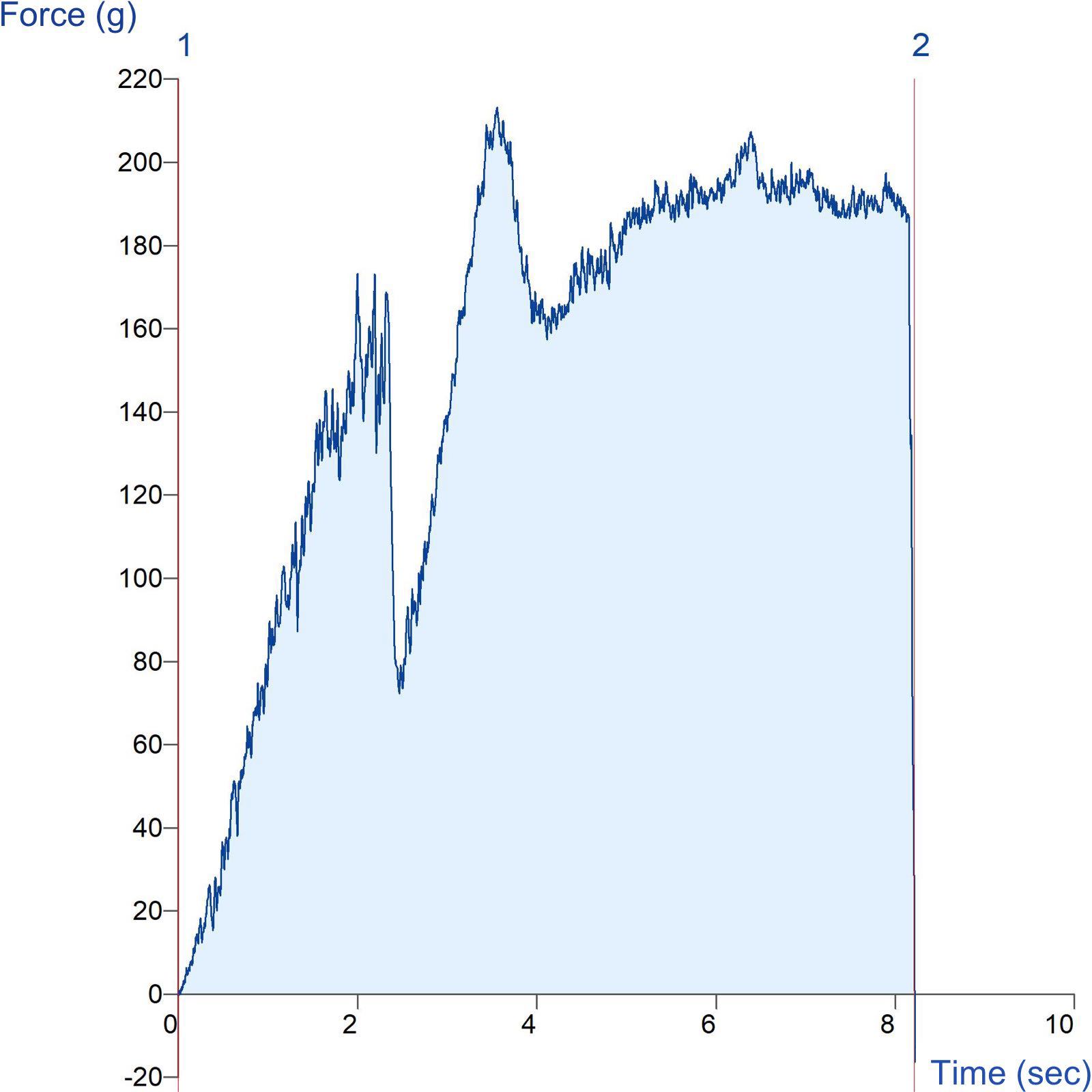Product overview
The basic concept and design of the Warner Bratzler shear device have been subject to modification and improvement over the years. Yet, the familiar blade, with its triangular notch in the middle, remains one of the most widely used devices to provide measurements of meat texture quality.
The width of the blades and the position of the triangle; the speed of the test; the shape, mass, and orientation of the test sample are of course important to interpretation of the results of shear tests but as is always found with “standard” methods and attachments there will always be reasons for modification of the specification of a test attachment and groups of researchers who prefer to move away from a standard to a method that suits their particular research purpose.
One such group is responsible for the development of a variant of the original Warner-Bratzler Blade. This blade set is as used in the European Honikel method for meat testing and has a thin rectangular slot blade. As a spin-off of a workshop on pork quality, held in Helsinki in 1992, a group of scientists with many years of experience in the field of meat quality assessment convened in 1993 for the first time, and subsequently in 1994 and 1995 in Kulmbach at the German Federal Centre for Meat Research to develop internationally accepted reference methods. In the Autumn of 1997 these methods (which include this method for tenderness) were brought into their final form at the Meat Industry Research Institute of New Zealand.
Although Warner Bratzler devices and sample configuration are extremely variable, the recommended equipment according to this “European” network is as follows. The blade should be 1.2mm thick with a rectangular hole 11mm wide and at least 15mm high. The hole should have square smooth edges and the blade should be drawn or be pushed at 50-100mm/min between side plates positioned to provide a minimum gap between blade and plates. The sample should be cut from a block of cooked meat and taken to avoid damage.
Sample strips should be cut with a 100mm² (10mm x 10mm) cross-section with the fibre direction parallel to a long dimension of at least 30mm. The sample should be sheared at right angles to the fibre axis. The parameters to be measured from the force deformation curve are the peak force (the maximum recorded) and the total energy. Initial yield may be useful in some instances but will not always be apparent.
How does the Thin Rectangular Warner-Bratzler Blade work?
Typical graph

Technical information
Ideal sample form
Samples with small rectangular profile.
Benefits and limitations
- Preparation of small samples
Installation
Full installation instructions are provided within the Education Zone of the latest Exponent/Connect software version and on the technical information sheet accompanying this product.
Chemical compatibility
Stable Micro Systems probes and attachments are commonly made from four materials: anodised aluminium (AA6082 T6), stainless steel (316 T), Delrin (acetyl copolymer) and Perspex (polycarbonate).
In general use, probes and attachments made from these materials will be suitable for testing food products and inert non-food materials.
The four materials listed above are not universally resistant to all types of chemicals and as such the compatibility of the probe/attachment material with the product (to be tested) must be established to prevent damage to the probes and attachments. If the compatibility of the product with the probe is unknown to the customer then the chemical information about the product (Material Safety Data Sheet or Product Data Sheet) should be submitted to Stable Micro Systems. Stable Micro Systems will then assess the suitability of the probe/attachment material for use with the product and advise accordingly. If this advice is not sought then Stable Micro Systems will not accept liability for probes/attachments damaged by chemical attack from the product being tested.
Cleaning and maintenance
All probes and attachments may be cleaned in warm (or hand hot) water using a mild detergent. A soft brush may be used but abrasive cleaning aids should be avoided. Stable Micro Systems products should not be microwaved or cleaned in a dishwasher.
Screw threads should be lightly lubricated after drying using a light lubricant, e.g. petroleum jelly, mineral oil. This will aid the fitting and unscrewing of the item. Each component of a probe or attachment should be wrapped separately when stored, to avoid scratching or chipping. This will safeguard against any unnecessary damage to the accessory.


